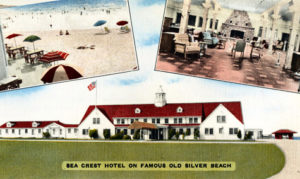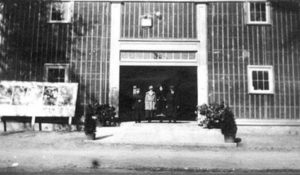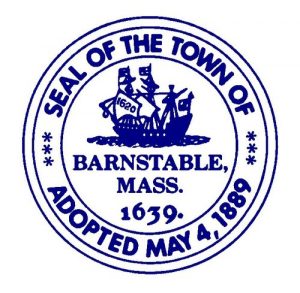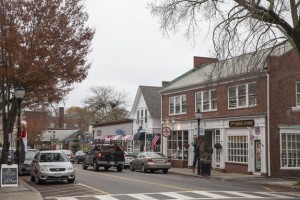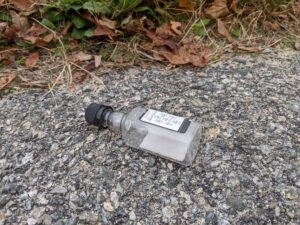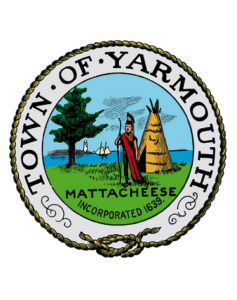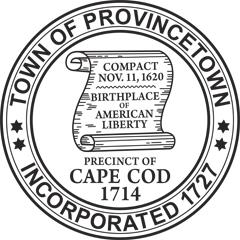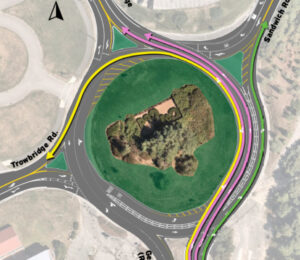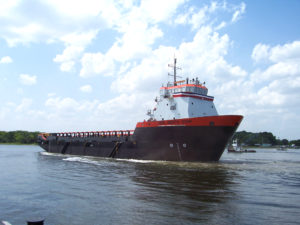Cape Cod and entertainment go hand in hand. Whether amateur or professional, music, theatre, or comedy, the list of talented performers who have graced the peninsula is endless. Places like the Cape Cod Coliseum, Melody Tent, Dennis Playhouse, and others have created a legacy that has stood the test of time. However did you know that there once was a legendary summer playhouse in Falmouth which was started by some iconic Hollywood actors?
The story began with the opening of the Elizabeth Theatre on Main Street in Falmouth in 1920. Much like the Idle Hour Theatre in Hyannis it would showcase live action events in addition to its motion pictures. The theatre, named for Elizabeth Robbins a notable local pianist and singer, took nearly all of 1920 to build with weather routinely causing delays. The $50,000 theatre ($612,000 in 2017) had a capacity of 750 and regularly sold out.
The Elizabeth Theatre grew a reputation for putting on tremendous entertainment throughout the 1920’s. The theatre and its desirable location on Cape Cod drew attention from some up and coming actors. In 1928 well known Woods Hole summer resident Charles Crane Leatherbee used his connections to draw in one of the most respected acting groups in the country. The group known as the University Players included burgeoning talents from Harvard, Princeton, Vassar, Smith, and Radcliffe. Leatherbee helped book the group for an eight week stay at Elizabeth Theatre.
The names of some of the University Players would in time become some of the most accomplished legends Hollywood has ever seen. They included James Stewart, Henry Fonda, Margaret Sullavan, Joshua Logan, Kent Smith, and others. During the 1928 season Fonda and Logan received rave reviews for their roles in a sold out performance of ‘In the Next Room.’ The group also received acclaim for performances of plays by A.A. Milne, creator of Winnie the Pooh, as well as Eugene O’Neill. However the group desired a theatre of their own rather than taking up residence in someone else’s.
The group’s first choice for a new theatre was near Quissett Harbor however tremendous opposition from local property owners caused hearings with the Zoning Board to be canceled in December 1928. Leatherbee, along with Fonda, then eyed a former electric light plant building on Scranton Avenue along the shore of Falmouth’s Inner Harbor as a potential site for the University Players theatre. However that was not to be as well and the process dragged from winter into spring of 1929.
In May 1929 a permit was issued to build a $12,000 ($171,000 in 2017) summer theatre for the University Players at Old Silver Beach. The outdoor venue needed the aide of fans bringing in the sea breeze to help cool the audience, still it did not stop crowds from flocking to the ten plays chosen by the group for the inaugural season in its new home. The new theatre also included the Pavilion Supper Room which would be open for dancing after the final curtain lowered for the night. July 1, 1929 would be opening night and the play of choice was the comedy ‘The Devil in the Cheese.’
The University Players would thrill crowds six nights a week during the season. After the end of their season the actors went back to school while Charles Leatherbee would work for the Theatre Guild of New York. The Players returned in 1930 to more rousing successes. Change would begin to come though. In 1931 the group again changed its name to University Players Inc., while actors such as Henry Fonda, Joshua Logan, and Margaret Sullivan began receiving national recognition for their skills. Despite their successes the group would remain together even through another name change, going from ‘University Players’ to the ‘Theatre Unit’ for their fifth season on the Cape in 1932. This was due to the fact that the group no longer mandated that its actors be current college students.
The 1932 season proved to be the last of that era as the crew’s funding was running out with the oncoming Great Depression. New management would lease the theatre and change the name to the Beach Theatre. After adding new faces to the group their success would be hit or miss. The new owner, Charles Abbott, added a restaurant called ‘The Den’ alongside the theatre in 1935. The Beach Theatre’s final shows would come shortly before Labor Day Weekend in 1936. The theatre, bath houses, and restaurant would all be destroyed by a fire on September 5, 1936.
Abbott planned to rebuild a larger staged theatre coupled with a restaurant and rooms to rent. His initial plans were rejected by the town and he faced opposition from local property owners. Through persistence Abbott was able to build his new amusement resort called ‘Neptune’s Tryst’ and have it opened July 24, 1937. It was nearly destroyed during the great Hurricane of 1938. In 1939 Abbott enlarged his resort and renamed it the Old Silver Beach Club before changing it to the Latin Quarter in 1942.
After being closed during World War II it reopened and remained virtually unchanged until 1963 when famed Boston Celtics coach Red Auerbach among others purchased the resort, christening it Sea Crest. Today the Sea Crest Beach Hotel is a widely popular year-round resort overlooking Old Silver Beach.
By Christopher Setterlund




